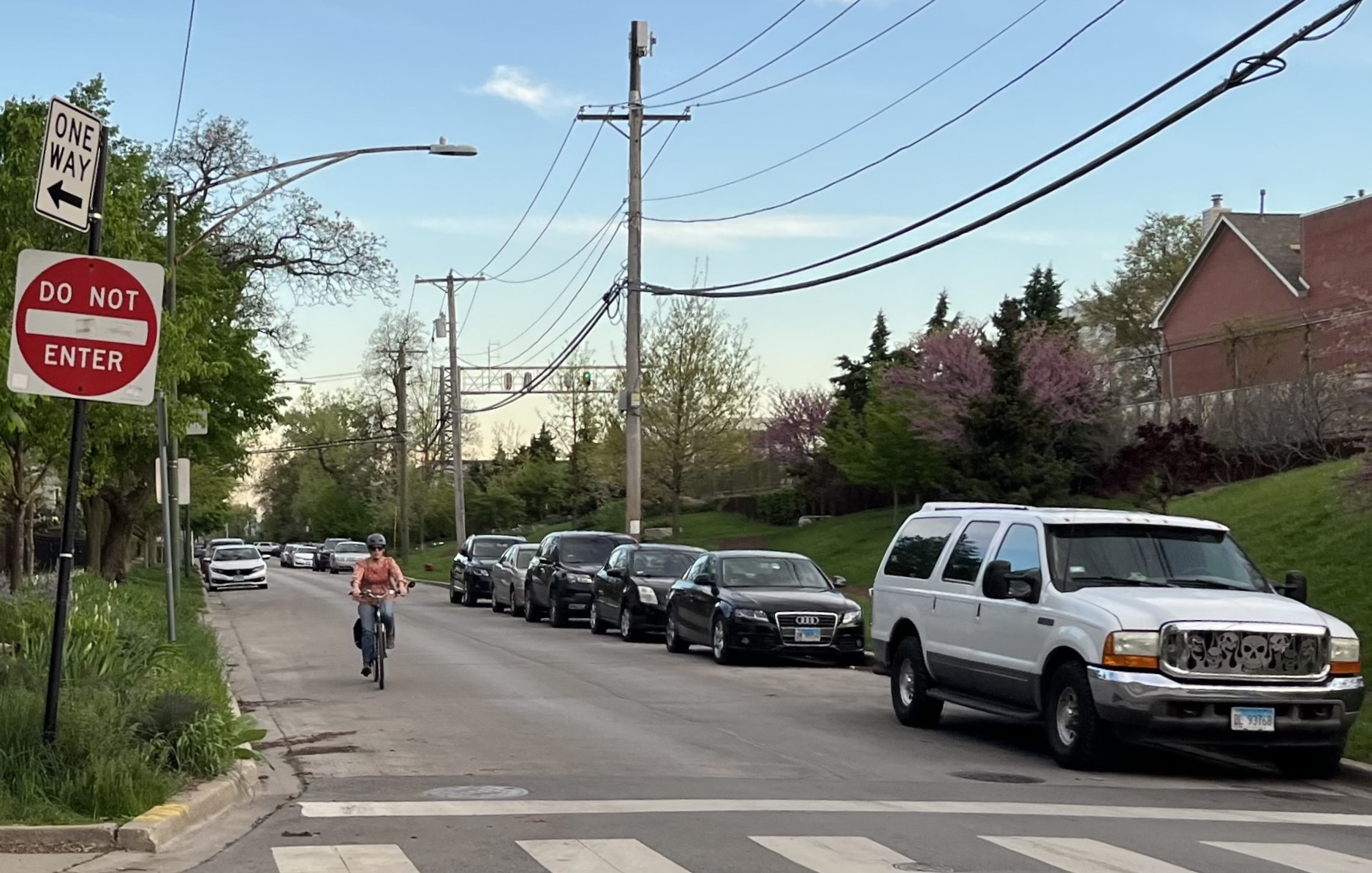Will Catalpa in Andersonville get a watered-down half-measure, or a vibrant pedestrian space?
11:05 AM CDT on August 8, 2022

The scenario where there would still be a travel lane on Catalpa for drivers, and the version with full pedestrianization. Photo: Carl Beien
Carl Beien is an organizer with Chicago, Bike Grid Now!, which is advocating for a citywide network of bike-priority residential streets, and holding weekly Bike Jam rides to call attention to the campaign. There will be a ride this Wednesday 8/10 at 5:30 p.m. leaving from BFF Bikes, 2056 N. Damen Ave.
Last Thursday, alders Andre Vasquez (40th) and Harry Osterman (48th) hosted an outdoor community meeting on a proposal to partially or completely pedestrianize the block of Catalpa Avenue (5500 N.) between Ashland Avenue (1600 W.) and Clark Street (1530 W.), creating a new community gathering space. The meeting lasted an hour and around 150 people attended. The project would address the need for more public open space in the Andersonville district. While there are a few nearby playgrounds, the closest spaces appropriate for gatherings of people of all ages are each roughly a mile away at Winnemac Park and the lakefront. Advocates can support this project by sending emails the 40th ward office at info[at]40thward[dot]org and 48th ward office at harry[at]48thward[dot]org.
The alders opened the meeting by discussing Chicago Department of Transportation traffic studies of the area, which found that this stretch of Catalpa carries sees relatively little use by drivers, and those trips could easily be absorbed into the local grid. That basically confirmed the obvious. The block is pedestrianized on a weekly basis during the summer for the Andersonville farmers market. And it completely closed to traffic for most of August 2020, when a "Black Trans Lives Matter" street mural was painted, after which it received a temporary Slow Streets treatment with traffic barricades and barrels to discourage through traffic. It's clear that limiting motor vehicle access to the block does not cause carmaggedon.
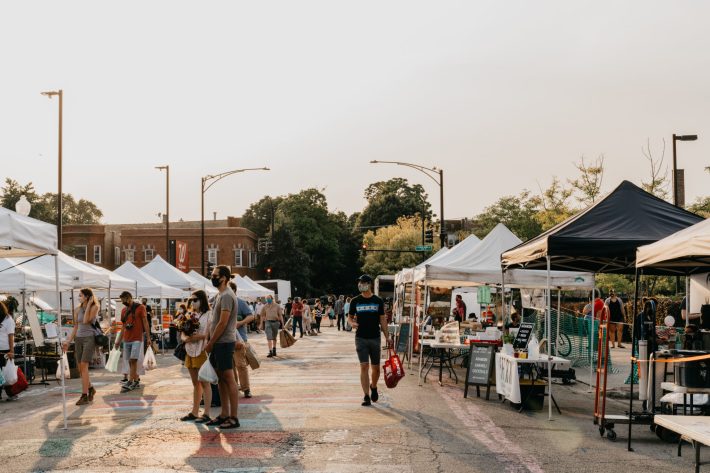
A CDOT staffer, introduced by Vasquez as having “the best job in Chicago,” presented possible ways that this wide and barren street, bordered by parking lots, could become a great new community asset. She showed two potential configurations, one of them a watered-down version where the vehicular travel lane, currently one-way westbound, is narrowed but still open to drivers, which means people using the remaining space would still have to deal with the danger, sight, sound, and fumes of cars.
In the second scenario, vehicular travel would be permanently banned, and the entire space would welcomes pedestrians 24/7/365. The designer also showed a series of inspiration images for the different design concepts that may be used in the final installation. Throughout the meeting, staff and volunteers managed comment cards, where attendees were asked to provide name, email address, their level of support for the project, and other feedback.
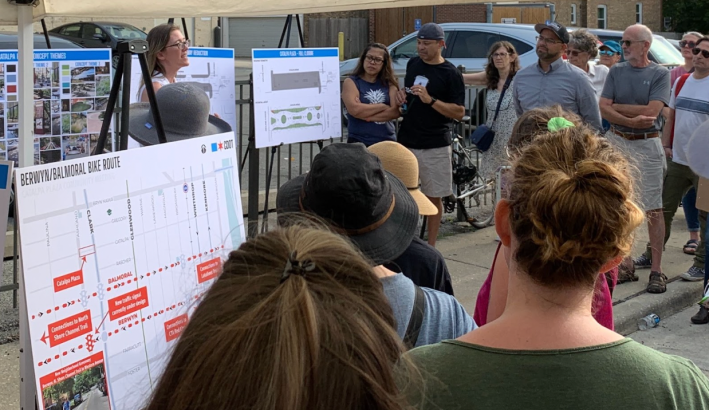
When the formal presentation ended, the alders opened the floor to questions, and predictably there would some comments that reflected a "Not In My Back Yard" viewpoint. The first person asked about the potential for the car-free space to be used for political demonstrations, indicating that they were frightened by a Black Lives Matter protest that previously took place on the block. The individual wanted to know what the alders would do to keep people safe. In response, Vasquez and Osterman said public safety is a high priority to them, and promised that the plaza would be a welcoming new amenity, not a magnet for danger.
Multiple follow-up questions asked some variant of “welcoming to whom,” demonstrating a consistent fear of and bigotry against people experiencing homelessness. While the alders repeatedly tried to reassure the residents that the plaza would be beautiful, well-maintained, and welcoming to all, the NIMBYs were not easily quieted, and conjured up new angles on the same issue.
Osterman tried to address these questions by telling the crowd that his office responds to people in the ward who are unhoused and/or have mental illness, and that the ward will continue to manage this regardless of what happens on Catalpa. Osterman recently announced he is not running for reelection.

Vasquez had a more pointed response. “This plan will not create more problems with housing," he said. "If you would like to work on housing issues, we can do that together. But if you are opposed to this project because it could make homelessness more visible to you, then that is something you must resolve in your own heart.” Only then did these offensive and embarrassing questions stop.
By the end of the meeting, most of the the questions focused on what will happen to the cars, with some residents seemingly in disbelief that the traffic studies’ results could be trusted. In the fully-pedestrianized, drivers seeking a signaled crossing of Ashland would use Bryn Mawr Avenue (5600 N.) to the north, or Berwyn Avenue (5300 N.) to the south, where a new stoplight would be installed.
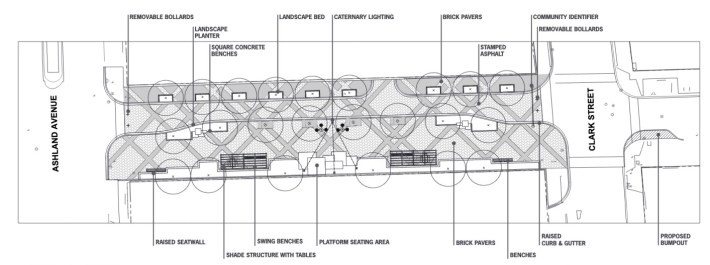
But, some drivers continued to raise concerns. “Do you understand that I will have to cross 6 speed humps?” one person asked. Considering there are no speed humps on Clark Street, or almost any other arterials in Chicago, it was unclear what route that person referred to. Another attendee, asked if avoiding Catalpa would add more than two minutes to their commute time responded, “It’s not just the extra time, it’s the congestion.” Again, the claim that permanently pedestrianizing Catalpa would create traffic jams was essentially disproved by the traffic studies.
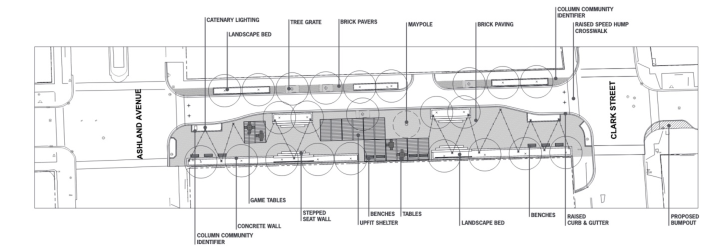
The alders made it clear that this project is happening, and the only question is whether the vibrant commercial stretch of Clark Street in Andersonville will get a totally car-free marquee gathering space, or a disappointing half-measure. The meeting organizers had cleverly kept a portion of Catalpa open to drivers during the meeting, and attendees experienced firsthand the noise, pollution and general discomfort that drivers bring to what would otherwise be a pleasant space.
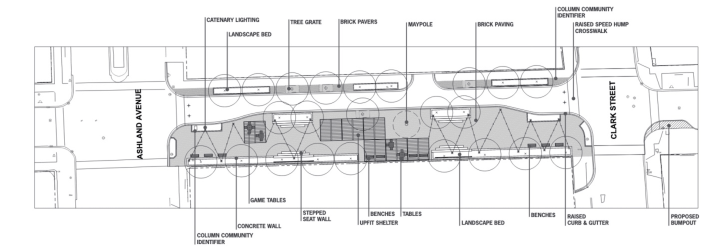
Vasquez, fresh from seeing the vibrant Ainslie Arts Plaza at Western and Lincoln avenues demolished by a reckless driver who wasn't even ticketed, specified how much open space would be compromised if the vehicle lane remains on Catalpa. “That is about 37 feet,” he said, pointing to the traffic cones that were all that protected meeting attendees from oblivious drivers, "But we’ll need curbs and other measures to ensure that drivers can’t incur into the space." With those elements, the space would be less than half of the continuous space that a full plaza would have.
To support a full opening of Catalpa to the community, advocates can send emails to the 40th ward office at info[at]40thward[dot]org and 48th ward office at harry[at]48thward.org.
Stay in touch
Sign up for our free newsletter
More from Streetsblog Chicago
Due to incredible support from readers like you, we’ve surpassed our 2023-24 fundraising goal
Once again, the generosity of walk/bike/transit boosters is fueling our reporting and advocacy.
Which Metra corridor would become more bike-friendly and greener under a new plan? Ravenswood!
Thanks to plans to convert little-used parking spaces, the avenue is slated to get a new bike lane, and the Winnslie Parkway path and garden will be extended south.


